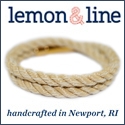
|
|
|
Scuttlebutt News: How the 1983 America's Cup was nearly cancelled (October 21, 2009) As the skipper of the American entry in the 1983 America's Cup, Dennis Conner comments on the legality of the Australia II design, and how close the New York Yacht Club came to cancelling the event.
So to determine the validity of these rumors, the NYYC sent representatives to the Netherlands to meet with van Oossanen, where I understood that he admitted to being the designer. However, he would not sign an affidavit to confirm this, which the NYYC felt would be needed if they chose to contest the boat, which in those days had to be designed by a national of the competing club’s country. So nothing happens, and now it is two or three nights before the Match, and there was a skipper’s meeting and reception, and Alan Bond and Warren Jones were there (note: Bond and Jones were the Australian team’s owner and executive director, respectively). It was during this event that the challenger was to sign a document that declared they had complied by all the rules of the event. But Bond and Jones wouldn’t sign the document. So now all this comes to a head only days before the Match when the Australians won’t sign the agreement, and the NYYC America’s Cup committee had to make a decision whether to contest the design of their boat. The club was really between a rock and hard spot. Everyone was in town for the event, no one would understand why the club would choose not race. But there was a hard core contingent on the committee that said rules are rules, and the Australians shouldn’t be allowed to compete. It was a close vote, I think 5-4, with the prevailing group believing that the club had to race, that to do otherwise would be bad for yachting, and would be a hit on the club’s reputation. Once the decision was made to race, the committee did not publicize their concerns with Australia II. The NYYC was not interested in looking like poor sports about this. Although I understood there may have been some issues with the legality of Australia II, my job was only to sail our boat, and I did the best job I could. I congratulated them on their victory then, and I do so now. I think back to the decision the NYYC made to race, and what would have occurred to the event and the sport if they chosen not to race. Then I think about what is going on now with the America’s Cup, and how the heightening level of litigiousness has eroded interest in the event. While it was no fun to lose in 1983, I am still glad we raced. Additional comments from Dennis Conner: * There was another aspect of the boat that I believed was illegal. The 12 meter rule stipulated the maximum draft of a boat, which was to guarantee that class legal boats could sail in a certain depth of water. But due to the extension of the wings, the draft of Ausralia II exceeded that depth as soon as it heeled. It was my opinion that the design of the Australia II wing keel clearly breached the intention of this rule. * Regarding the design rule, you have to understand how different things were back then. There hadn’t been too many foreign designers. But this was now the beginning of consultants being a part of design teams. The rule restricting the nationality of the designer had to change. How do you determine the level of involvement of each consultant, and then track their nationality? The rule was no longer enforceable. * While the appearance of the wing keel was not a surprise to us that summer, that doesn’t mean we knew exactly how it worked. Nobody ever had thought of doing this before. From when Australia II was measured months before the Match, we had a source provide us with sketches of their hull and keel. We did retrofit our training boat with wings to see if she would go faster, but it was to no avail. The wetted surface of the Australian’s keel had been reduced to accommodate the addition of the wings. It just didn’t work to stick wings on our fuller keel. Correctly designing the dimensions of the keel and wings, and their angles, was now beyond us. Our time and resources were limited, plus I wasn’t event the defender yet. I still had to go through the defender trials. * During the Match, it was common knowledge along the waterfront that they had the winged keel. When they finally pulled the boat out after they won, while it was no longer a surprise, it was interesting to see it. Like I said, we had our idea of what it looked like, but it was still remarkable at how short the root of the keel was. The 12 meter keels had always had such a long run, nearly starting from the front of the boat and then going down to the bottom of the keel. * There are people that have said that the winged keel didn’t win the America’s Cup, but that the whole boat and sails were highly refined. Maybe they were, but we’ll never know that. How would you know unless you sailed Australia II with a standard keel on it? The facts remain that we were 3 to 3, we won every start, and hung in there with a boat that was quite a bit slower. back to top |







|


